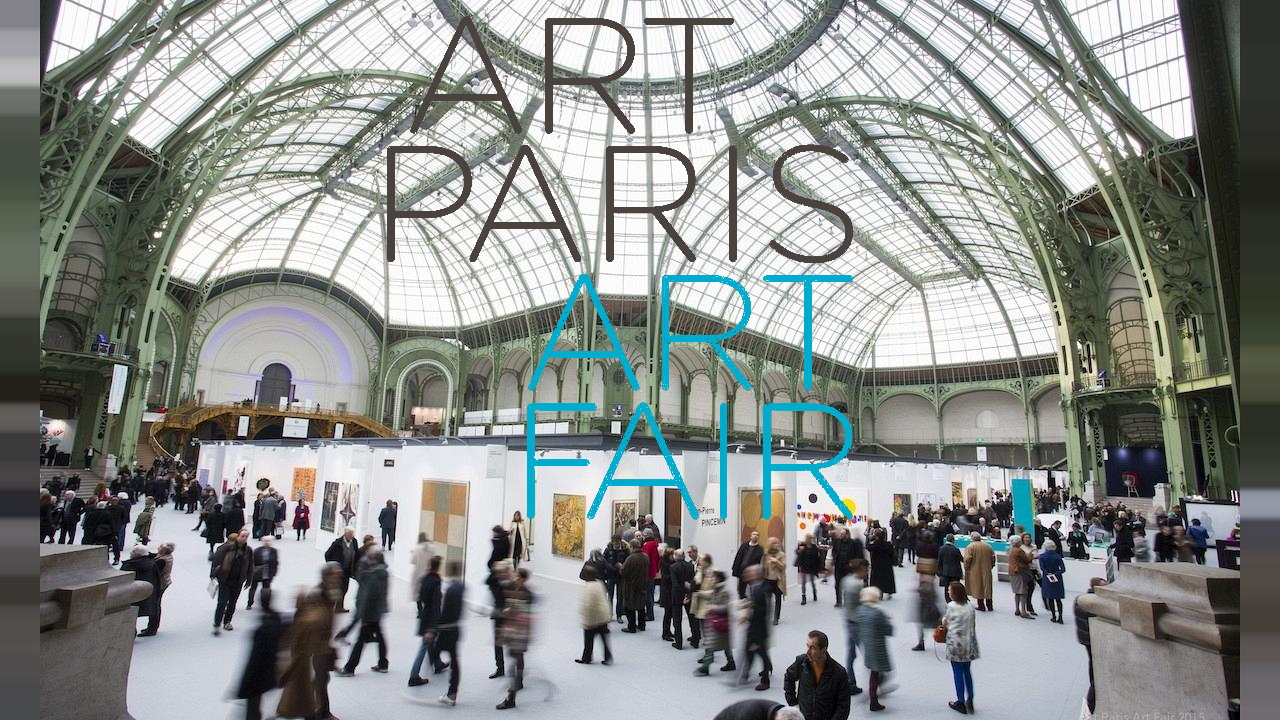
漢德百科全書 | 汉德百科全书
 Ile-de-France
Ile-de-France

 Chancellerie des universités de Paris
Chancellerie des universités de Paris
 Frankreich
Frankreich

 Ile-de-France
Ile-de-France
 Nobelpreis
Nobelpreis
 Nobelpreis für Chemie
Nobelpreis für Chemie
 Nobelpreis
Nobelpreis
 Nobelpreis für Frieden
Nobelpreis für Frieden
 Nobelpreis
Nobelpreis
 Nobelpreis für Literatur
Nobelpreis für Literatur
 Nobelpreis
Nobelpreis
 Nobelpreis für Physik
Nobelpreis für Physik
 Nobelpreis
Nobelpreis
 Nobelpreis für Physiologie oder Medizin
Nobelpreis für Physiologie oder Medizin
 Nobelpreis
Nobelpreis
 Nobelpreis für Wirtschaftswissenschaften
Nobelpreis für Wirtschaftswissenschaften
 Nobelpreis
Nobelpreis
 Universität/Institut
Universität/Institut
 Sinologie
Sinologie


The University of Paris (French: Université de Paris), metonymically known as the Sorbonne (French: [sɔʁbɔn], one of its buildings), was a university in Paris, France, from around 1150 to 1793, and from 1806 to 1970.
パリ大学(仏:Université de Paris)は、かつてフランス共和国のパリに存在した大学。1970年に、パリ、クレテイユおよびヴェルサイユの3大学区にある13の大学に分割された[1]。これらの大学では、多くのノーベル賞受賞者を送り出している他、法学、政治学、科学、物理学、神学などの分野で優秀な学者を輩出している。また芸術の教育機関としても名高い。
Emerging around 1150 as a corporation associated with the cathedral school of Notre Dame de Paris, it was considered the second-oldest university in Europe.[1] Officially chartered in 1200 by King Philip II (Philippe-Auguste) of France and recognised in 1215 by Pope Innocent III, it was later often nicknamed after its theological College of Sorbonne founded by Robert de Sorbon and chartered by French King Saint Louis around 1257.[citation needed]
Internationally highly reputed for its academic performance in the humanities ever since the Middle Ages – notably in theology and philosophy – it introduced several academic standards and traditions that have endured ever since and spread internationally, such as doctoral degrees and student nations. Vast numbers of popes, scientists, intellectuals and royalty were educated at the University of Paris. A few of the Colleges of the time are still visible close to Pantheon and Luxembourg Gardens : College des Bernardins (18, rue de Poissy 75005), Hotel de Cluny (6, Place Paul Painleve 75005), College Sainte Barbe (4, rue Valette 75005), College d'Harcourt (44 Boulevard Saint-Michel 75006), Cordeliers (21, Rue Ecole de Medecine 75006). [2]
In 1793, during the French Revolution period, the university was closed and by Item-27 of the Revolutionary Convention, the college endowments and buildings were sold.[3] A new University of France replaced it in 1806 with four independent faculties: the Faculty of Humanities ("Faculté des Lettres"), the Faculty of Law (later including Economics), the Faculty of Science, the Faculty of Medicine and the Faculty of Theology (closed in 1885).
In 1970, following the May 1968 events, the university was divided into 13 autonomous universities. Although all the thirteen universities that resulted of the original University of Paris split can be considered its inheritors, just three universities of the post-1968 universities inherited the name "Sorbonne", as well as its physical location in the Latin Quarter (i.e. Pantheon-Sorbonne University (Paris I); University of Paris III: Sorbonne Nouvelle; and Paris-Sorbonne University (Paris IV).[4][5][6][7]
From 2010, several of the University of Paris successors started to reorganise themselves into different groups of universities and institutions (COMUE), that, later, were upgraded to "pôles de recherche et d'enseignement supérieur". As a result, various university groups exist in the Paris area, among them Sorbonne Paris Cité, Sorbonne Universities, the University of Paris-Saclay, Paris Lumiéres, Paris-Seine, and so on.[8]
In January 2018, two of the inheritors of the old University of Paris, Paris-Sorbonne University and Pierre and Marie Curie University, merged into a single university called Sorbonne University.[9][10][11]
In 2019, two other inheritors of the University of Paris, namely Paris Diderot University and Paris Descartes University, are also expected to merge.[12]
L'Università di Parigi, conosciuta anche come la Sorbona, fu fondata nel 1170 circa. Fu riconosciuta dal Re Filippo II di Francia nel 1200 e dal papa Innocenzo III nel 1215 (in particolare, dal suo legato pontificio Roberto di Courçon). Soppressa nel 1793 all'indomani della Rivoluzione Francese, fu rifondata nel 1896.
Dal 1º gennaio 2018, con la fusione dei due atenei Paris-Sorbonne e Università Pierre e Marie Curie, è stata istituita un'unica università denominata Sorbonne Université[1][2]
La Universidad de París (en francés: Université de Paris), también conocida como La Sorbona, fue una de las universidades medievales más antiguas y más importantes. Fue fundada a mediados del siglo XII por el obispo de la ciudad y sus instalaciones se situaron cerca de la Catedral Notre Dame de París. En 1200 fue reconocida por el rey Felipe II y en 1215 por el papa Inocencio III. Adquirió rápidamente un gran prestigio, especialmente en filosofía y teología. Se constituyó como asociación de todos los colegios preexistentes en la ciudad de París situados a la orilla izquierda del río Sena (entre ellos La Sorbona, fundado en el año 1215 y con gran prestigio durante la Edad Media debido a su facultad de teología, cuyo nombre se asociaría posteriormente a toda la universidad). Su objetivo era formar a los funcionarios de la administración real (Consejo de Estado, parlamentos, tribunales, hacienda, etc.) y de instituciones eclesiásticas (profesores, médicos, bibliotecarios, obispos, abades, etc.).
Durante la Edad Moderna sufrió una situación de declive. En 1793 fue cerrada y sustituida por escuelas superiores especializadas en derecho, medicina, ingeniería, escuelas normales, etc. Un siglo más tarde, en 1896, se reabrió con cuatro facultades: Derecho, Medicina, Letras y Ciencias.
Tras los sucesos de mayo de 1968 y las reformas de 1968-1971 la universidad se dividió en trece universidades independientes, algunas de ellas multidisciplinares y otras especializadas en determinados ámbitos del conocimiento.
Парижский университет (фр. Université de Paris) — французский университет в Париже, один из старейших в мире; основан в середине XII века; будучи интернациональным образовательным учреждением, очень скоро заслужил европейскую репутацию. Его центром является здание Сорбонны в Латинском квартале на левом берегу Сены.
Как полудуховное общество магистров (преподавателей), подчинённое духовной власти, Парижский университет представлял полный контраст со светскими, республиканскими университетами североитальянских городов; в качестве основного образования (Studium generale) он был, главным образом, высшей школой богословия и свободных искусств, включал в свои программы юриспруденцию только в виде канонического права, а в медицине уступал первенство другим studia generalia.
Став величайшей школой всей Западной Европы, имея среди своих учеников и учителей представителей всех наций и величайших учёных средневековья — Фому Аквинского, Альберта Великого, Раймунда Луллия, Роджера Бэкона, Дунса Скота, Уильяма Оккама, — университет стал высшим авторитетом в вопросах веры и разума и во время падения папства, в эпоху великого раскола, в лице Д’Альи, Герсона и Клеманжи был руководителем католической церкви и сделал попытку реформировать её во главе и членах.
После майских событий 1968 года был преобразован в 1970 году в 13 парижских независимых университетов.


 Architektur
Architektur
 Frankreich
Frankreich

 Ile-de-France
Ile-de-France



 Luft- und Raumfahrt
Luft- und Raumfahrt
 Größte Flughäfen nach Frachtaufkommen/Busiest airports by cargo traffic
Größte Flughäfen nach Frachtaufkommen/Busiest airports by cargo traffic

Der Flughafen Paris-Charles-de-Gaulle (IATA-Code: CDG, ICAO-Code: LFPG, auch Roissy) ist vor Paris-Orly der größte internationale Verkehrsflughafen der französischen Hauptstadt Paris sowie mit 67,4 Millionen Passagieren im Jahr 2023 der drittgrößte Passagierflughafen Europas nach London Heathrow und Istanbul. Im weltweiten Vergleich der Flughäfen steht Paris Charles de Gaulle auf Rang 12. Der nach dem französischen General und Staatsmann Charles de Gaulle benannte Flughafen ist das internationale Drehkreuz der Air France und mit über 600 Unternehmen und etwa 75.500 Beschäftigten einer der wichtigsten Wirtschaftsstandorte der Île-de-France.
巴黎夏尔·戴高乐机场(法语:Aéroport Paris-Charles-de-Gaulle;IATA代码:CDG;ICAO代码:LFPG),中文通称巴黎戴高乐机场及戴高乐机场,为欧洲主要的航空中心,是法国主要的国际机场,也是法国首都巴黎首要的机场。它是以法兰西第五共和国第一任总统夏尔·戴高乐的名字命名的。其位于离巴黎市中心东北25公里处的法兰西地区鲁瓦西(隶属于法兰西岛大区的瓦兹河谷省),也因此被称为鲁瓦西机场(法语:Roissy)。




巴黎地铁或巴黎地下铁(法语:Métro de Paris)是法国巴黎的地下轨道交通系统,于1900年起运行至今。目前巴黎地铁总长度245.6公里,有14条主线和2条支线,共16条路线,合计320个车站。巴黎地铁现由巴黎大众运输公司 (RATP)负责营运。该公司亦同时营运RER的一部分、法兰西岛有轨电车多条路线,以及巴黎及其近郊的公交车路网。RATP的运营计划在法兰西岛运输联合会(IDFM)的指派下进行[1]。
Die Métro Paris ist das U-Bahn-System der französischen Hauptstadt. Der heutige Name (le) Métro entstand als Kurzform von Chemin de fer métropolitain (Metropoleneisenbahn). Die erste Linie wurde am 19. Juli 1900 anlässlich der Weltausstellung von Paris eröffnet und war nach London (1863), Liverpool (1893), Budapest und Glasgow (beide 1896) die fünfte U-Bahn der Welt.
Das Netz ist mit 245,6 Kilometern Gesamtlänge und 404 Haltepunkten in 320 Stationen, die von insgesamt sechzehn voneinander unabhängigen Linien bedient werden, eines der größten der Welt. Charakteristisch sind die hohe Netzdichte innerhalb der Stadt und die geringen Abstände zwischen den einzelnen Stationen – im Schnitt rund 500 Meter. Rein rechnerisch benutzen etwa 4,3 Millionen Menschen pro Tag die Pariser Métro. Die seit den 1970er Jahren als Ergänzung des Métronetzes ausgebauten fünf RER-Linien (Réseau express régional d’Île-de-France) verlaufen innerstädtisch ebenfalls unterirdisch, jedoch mit größeren Haltestellenabständen; mit RER-Zügen werden täglich 2,7 Millionen Fahrgäste vor allem in die Vororte transportiert – auf einem Streckennetz von 608 Kilometern mit 252 Haltepunkten (Stand 2024). Die Transilien-Vorortzüge binden mit weiteren neun Linien und einem Streckennetz von 1.110 Kilometern mit 257 Bahnhöfen weitere Vororte, der 12,4 Millionen Einwohner zählenden Hauptstadtregion Île-de-France ans Zentrum an. Die Straßenbahn Île-de-France komplementiert das Netz mit 14 Linien, die auf 186,6 Kilometern 278 Stationen bedienen. Schließlich ergänzen etwa 1500 Buslinien mit einem Streckennetz von etwa 25 000 Kilometern das ÖPNV-Netz in der Hauptstadtregion. Der Bahnhof Châtelet-Les Halles, in dem sich fünf Métrolinien und drei RER-Linien kreuzen, gilt als der größte U-Bahnhof der Welt. Métro und RER bedienen auch den Fernbahnhof Gare du Nord, der der weltweit meistfrequentierte Bahnhof außerhalb Asiens ist. Mit dem Grand Paris Express, der seit 2015 in Bau ist und vier neue Linien sowie die Verlängerung von zwei bestehenden Métrolinien vorsieht (mit 200 neuen Streckenkilometern und 71 Stationen), soll sich die Länge allein des Métronetzes bis 2030 verdoppeln. Während das Métronetz ursprünglich nur bis an den Rand der Kernstadt reichte und RER die Vororte an das Zentrum anbinden sollte, soll der Grand Paris Express bessere Verbindungen um Paris herum gewährleisten. Die erste Strecken des Grand Paris Express, die Verlängerungen der Linie 14 nach Norden und Süden, gingen am 24. Juni 2024 in Betrieb.
 Chancellerie des universités de Paris
Chancellerie des universités de Paris

 Colleges and Universities in Europe
Colleges and Universities in Europe
 Universitäten in Frankreich
Universitäten in Frankreich

 Chancellerie des universités de Paris
Chancellerie des universités de Paris

 Colleges and Universities in Europe
Colleges and Universities in Europe
 Universitäten in Frankreich
Universitäten in Frankreich

 Chancellerie des universités de Paris
Chancellerie des universités de Paris

 Colleges and Universities in Europe
Colleges and Universities in Europe
 Universitäten in Frankreich
Universitäten in Frankreich

 Breakthrough Prize
Breakthrough Prize
 New Horizons in Physics Prize
New Horizons in Physics Prize
 Chancellerie des universités de Paris
Chancellerie des universités de Paris

 Colleges and Universities in Europe
Colleges and Universities in Europe

 Ile-de-France
Ile-de-France
 League of European Research Universities,LERU
League of European Research Universities,LERU
 Universitäten in Frankreich
Universitäten in Frankreich
 Sorbonne University group
Sorbonne University group

 Chancellerie des universités de Paris
Chancellerie des universités de Paris

 Colleges and Universities in Europe
Colleges and Universities in Europe
 Universitäten in Frankreich
Universitäten in Frankreich

 Geschichte
Geschichte
 Religion
Religion
 Transport und Verkehr
Transport und Verkehr
 Messe
Messe
 Kunst
Kunst
 Freizeitpark
Freizeitpark
 Olympische Sommerspiele 2024
Olympische Sommerspiele 2024